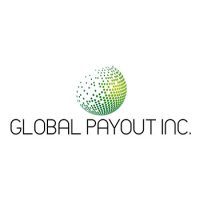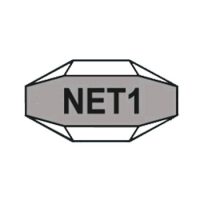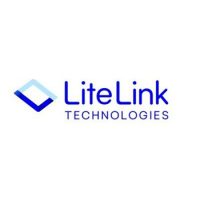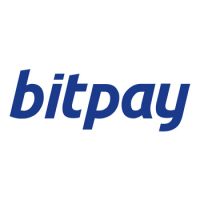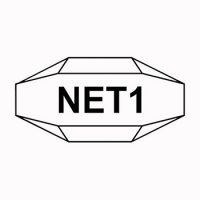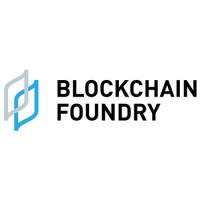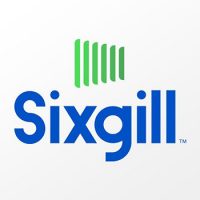Blockchain
Lion Announces Unaudited Full Year 2021 Financial Results
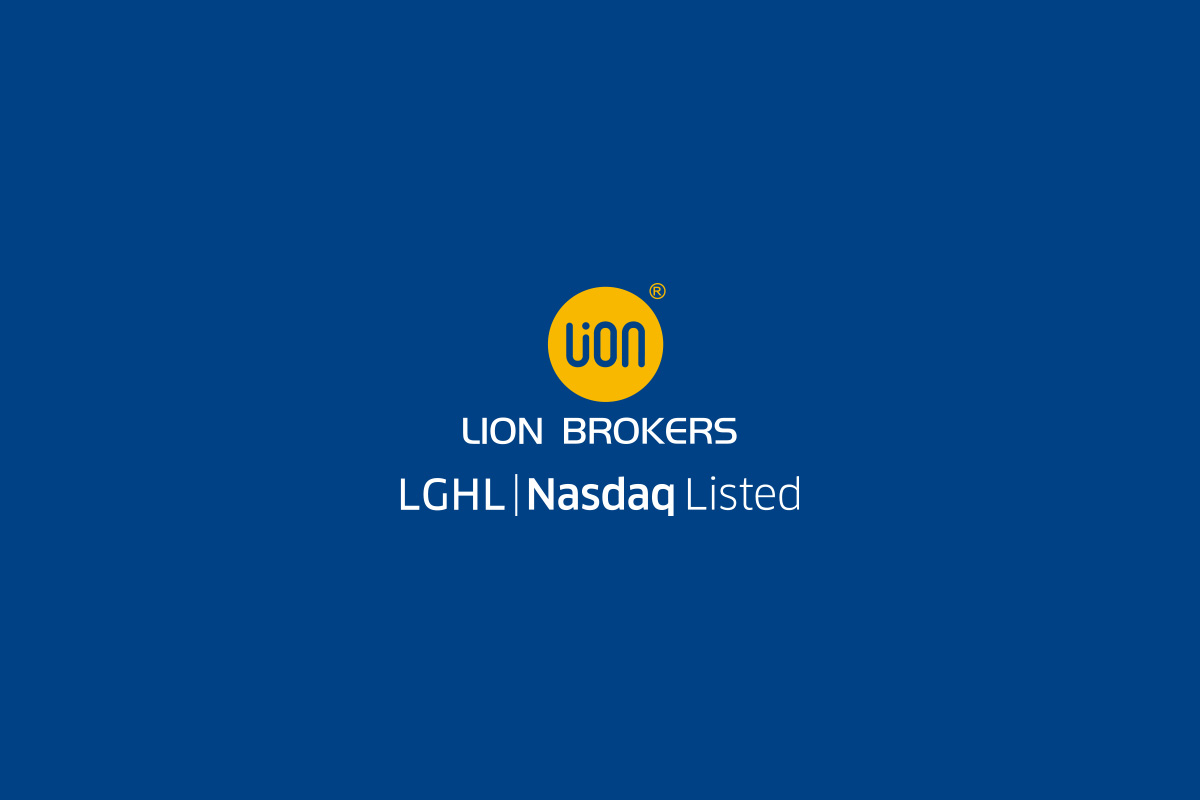
Lion Group Holding Ltd. (“Lion” or “the Company”) (NASDAQ: LGHL), operator of an all-in-one trading platform that offers a wide spectrum of products and services and developer of new growth products that include SPAC sponsorship, NFT, and metaverse-related initiatives, today announced its unaudited financial results for the full year ended December 31, 2021.
FINANCIAL AND OPERATING HIGHLIGHTS
All comparisons are made on a year-over-year (“yoy”) basis[1].
|
[1] Numbers in 2020 are restated due to SEC statement on the accounting of SPAC warrants issued in May 2021. Detailed restated FY2020 financial statements in form 20-F/A are available: https://www.sec.gov/ix?doc=/Archives/edgar/data/0001806524/000121390021032286/f20f2020a1_liongroup.htm |
For the Full Year Ended December 31, 2021
- Total revenues increased by 164.5% to $27.1 million from $10.2 million in the prior year.
- Net income attributable to LGHL was $22,782, compared to a net loss of $2.6 million in the prior year.
- Non-GAAP net income attributable to LGHL increased by 726% to $3.0 million from $0.4 million in the prior year.
- Total number of revenue-generating client accounts increased by 5% to 5,261 from 5,010 last year.
- Total revenue-generating CFD (contract for difference) client trading accounts increased by 7% to 2,866 from 2,668 last year.
- Total return swap (“TRS”) trading volume was $1,074 million.
- Contract-for-difference (“CFD”) trading volume increased by 103.4% to 453,687 lots from 223,018 lots last year.
- Futures brokerage trading volume increased by 52.3% to 1,124,805 lots from 738,444 lots last year.
Mr. Chunning (Wilson) Wang, CEO of Lion, commented: “We concluded the year of 2021 on a strong note, as revenue doubled and user numbers grew steadily. Our entire team worked tirelessly to deliver monumental results in 2021 and remain competitive in the industry, despite challenges attributable to the ongoing pandemic and capricious regulatory environment. Non-GAAP net income attributable to LGHL increased by nearly sevenfold, largely attributable to our diverse products and high-quality services.”
“Our CFD and TRS trading businesses remain stable and continue to contribute as key drivers of revenue growth. The NFT business and our Metaverse project also played significant roles in becoming new revenue sources this year. Lion’s NFT project, MetaWords, created in collaboration with renowned Chinese calligrapher and conceptual artist Mr. Xu Bing, attracted numerous users and creators. Relevant MetaWords blind boxes, containing MetaWords characters as well as fragments of Xu Bing’s Book from the Ground, have sold out since its launch,” Mr. Wang continued.
“2022 will be a year of reacceleration for Lion. We have re-located our corporate headquarters to Singapore to further our expansion in Southeast Asia, after being granted our trading license in Singapore. To provide a better experience to our growing global user base and accelerate our market expansion, we will continue to make decisive investments in core technologies and services for the years ahead. We are dedicated to providing high-quality products to our customers and generating long-term value to our stakeholders,” Mr. Wang concluded.
RECENT DEVELOPMENTS
- Granted Trading License in Singapore, Further Expansion into Southeast Asia
On October 4, 2021, Lion announced its subsidiary, Lion International Financial (Singapore) Pte. Ltd. (“Lion Singapore”), had been granted a Capital Markets Service License (“CMS License”) from the Monetary Authority of Singapore. The CMS License allows Lion Singapore to deal in exchange-traded derivatives contracts, over-the-counter derivatives contracts and spot foreign exchange contracts for the purposes of leveraged foreign exchange trading.
- Significant Success of NFT Language Project, MetaWords
On December 20, 2021, Lion’s NFT project, MetaWords, passed CertiK security audit. MetaWords was created in collaboration with renown Chinese calligrapher and conceptual artist Mr. Xu Bing. MetaWords consists of Character NFTs derived from Mr. Xu’s Book of the Ground.
– Launch of NFT Platform, MetaWords Art Project
In January 2022, Lion announced the official launch of its Lion NFT market platform, Lion NFT (https://lionnft.io/). Simultaneously, the Company introduced its cooperative NFT art project, MetaWords.
– Successful Blind Box Sales and Auction
In January 2022, Lion also announced the successful sales of its MetaWords blind boxes. All 2,742 blind boxes, containing MetaWords characters as well as MetaWords works of Xu Bing’s Book from the Ground, sold out since their first market offering on January 17, 2022. The auction sale of six MetaWords characters was completed on January 22, 2022. Lion received an aggregate of 749 Binance Coins, or BNB, net of the incentive credits to customers, which was approximately $438,000 USD at the spot token price upon the completion of the sale.
– Introduction of its “Creation Tools” feature
On January 18, 2022, MetaWords announced the introduction of its “Creation Tools” feature that allows users to easily create new characters. True to the essence of the NFT community’s bottom-up method, this new launch confirms that MetaWords, as a meta-language infrastructure, differs from other digital collections. Users can log onto lionnft.io and make their own metaverse creations.
FINANCIAL RESULTS
For the Full Year ended December 31, 2021
Revenues
Total revenues increased by 164.5% yoy to $27.1 million for the year ended December 31, 2021, from $10.2 million for the year ended December 31, 2020, primarily due to an increase in each segment.
- CFD trading services income. Revenues generated from CFD trading services increased by 27.5% yoy to US$8.7 million from US$6.8 million in the prior year. The increase was primarily due to an increase in CFD trading volume, mainly attributable to the partial recovery of the overall economy and market with the relief of pandemic in the second half of 2021. Total CFD products trading volume was 453,687 lots, compared to 223,018 lots in 2020. The commission revenues derived from CFD trading services in 2021 are approximately 80% related to stock indices and near 20% related to commodities with a remaining insignificant proportion relating to other CFD products. In 2020, the two percentages were 68.5% and 31.5%, respectively.
- TRS trading services income. Revenues generated from TRS trading services income increased to US$13.1 million from US$0.2 million in the prior year. As one of the core businesses, Lion strategically directed significant resources to developing and expanding TRS trading services to customers in 2021. In the meantime, Lion achieved significant gains from its proprietary TRS trading activities. TRS trading volume was $1,074 million in 2021.
- Futures and securities brokerage income. Revenues generated from futures and securities brokerage income increased by 38.0% yoy to US$2.8 million from US$2.0 million in the prior year. The increase was primarily due to the rebound of futures market in Hong Kong in 2021. Total number of executed futures contracts was 1,124,805 lots, compared to 738,444 lots in 2020.
- Others. Revenue generated from other services increased by 108.0% yoy to US$2.4 million from US$1.2 million in the prior year, primarily attributed to bitcoin mining revenue of $1.7 million generated in 2021.
|
Year ended December 31, |
|||||||||
|
2021 |
2020 |
||||||||
|
US$ |
% |
US$ |
% |
||||||
|
CFD trading services |
8,700,009 |
32.1 |
6,823,677 |
66.7 |
|||||
|
TRS trading services |
13,132,833 |
48.5 |
210,770 |
2.0 |
|||||
|
Futures and securities brokerage services |
2,800,543 |
10.4 |
2,029,669 |
19.9 |
|||||
|
Others |
2,425,100 |
9.0 |
1,166,019 |
11.4 |
|||||
|
Total |
27,058,485 |
100.0 |
10,230,135 |
100.0 |
|||||
Expenses
Total expenses increased by 117.4% yoy to $27.8 million from US$12.8 million in the prior year, primarily due to increases in commission expenses, cost of crypto mining, service fees, professional fees, research and development, communication and technology, and amortization of debt discounts and depreciation.
- Commissions and Fees increased by 79.7% yoy to $3.3 million from $1.8 million in the prior year, primarily due to an increase in TRS trading commission expenses by US$1.0 million and an increase in the futures brokerage commission expenses of US$0.7 million, partially offset by a decrease in the insurance brokerage commission expenses of US$0.2 million, which is in line with the overall trench of such businesses.
- Compensation Expenses increased by 7.0% yoy to $4.1 million from $3.8 million in the prior year period, primarily due to the increase in average compensation and discretionary bonus paid out in 2021.
- Communication and Technology Expenses increased by 32.7% yoy to $1.9 million from $1.5 million in the prior year, primarily due to an increase in trading service fees and market data fees, which was in line with the launch of TRS trading services.
- Cost of Crypto Mining was $1.2 million in 2021.
- General and Administrative Expenses decreased by 10.9% yoy to $2.0 million from $2.3 million in the prior year, primarily due to a portion of share-based compensation granted in 2020 charged into general and administrative expenses.
- Professional Fees increased by 145.0% yoy to $3.8 million from $1.6 million in the prior year, primarily due to the accounting, legal, investor relations, and consulting services fees additionally incurred after we became a public company in June 2020, compared to the corresponding period of 2020, professional fees of US$2.4 million directly associated with the reverse acquisition with SPAC were charged to equity, instead of earnings.
- Services Fees for independent contractors and consultants increased to $3.6 million from $0.8 million in the prior year as a result of an increased number of contracted service providers needed due to the growth of the business lines such as TRS trading and NFT, as well as a one-off special inventive scheme for the year ended December 31, 2021.
- Research and Development Expenses were $1.2 million in 2021 in connection with developing and enhancing the Metaverse project.
- Interest Expenses increased to $1.6 million from $0.2 million in the prior year, primarily attributable to the amortization of debt discounts of US$0.8 million from convertible debenture, as well as interest of US$0.8 million paid for loans borrowed from TRS trading service business partners.
- Depreciation Expenses increased to $0.9 million from $40,556 in the prior year, mainly attributable to the depreciation of newly acquired copyrighted trading software programs related to CFD and TRS trading services from March 2021.
- Marketing Expenses increased by 40.3% yoy to $0.9 million from $0.7 million in the prior year, mainly due to marketing expenses incurred to maintain existing customers and develop new customers, while promoting the businesses and branding activities.
- Other Expenses increased to $0.1 million from $11,464 in the prior year.
Net (loss) income
Net loss was $0.8 million for the year of 2021, compared to a net loss of $2.6 million in 2020.
Net Income/(loss) attributable to LGHL
Net income attributable to LGHL was US$27,782 for the year of 2021, compared to a net loss of US$2.6 million in 2020.
Net loss attributable to LGHL ordinary shareholders per ADS
Diluted net loss per ADS was $0.27 in 2021, compared to a diluted net loss per ADS of $0.25 in 2020.
Non-GAAP Financial Results
Non-GAAP net income attributable to LGHL, excluding change in fair value of warrant liabilities, stock-based compensation expenses and amortization of debt discounts and depreciation expenses, was $3.0 million for the full year of 2021, compared to non-GAAP net income of $0.4 million for the full year of 2020. Non-GAAP diluted net income attributable to LGHL per ADS was US$0.09 in 2021, compared to a non-GAAP diluted net income per ADS of US$0.04 in 2020.
Liquidity
As of December 31, 2021, the Company’s cash and restricted cash were $15.1 million (excluding $0.7 million of restricted cash), compared to $3.4 million (excluding $1.4 million of restricted cash), as of December 31, 2020, Net cash used in operating activities was $20.5 million. Net cash used in investing activities was $12.1 million. Net cash provided by financing activities was $43.6 million.
BUSINESS OUTLOOK
Based on current market and operating conditions, the Company expects revenue to grow to approximately $41 million for the full year 2022, representing approximately 50% growth on a year-over-year basis, primarily driven by our TRS and CFD trading business. This estimate does not include potential revenues from our SPAC business dealings. This forecast reflects the Company’s current and preliminary views, which is subject to change, including any potential future impact of the COVID-19 pandemic, the effects of which are difficult to analyze and predict.
Non-GAAP Financial Measures
This press release includes reconciliations of the most comparable financial measures calculated and presented in accordance with accounting principles generally accepted in the U.S. (“GAAP”) to non-GAAP financial measures. The Company’s calculation of Non-GAAP (loss) income (net loss or income before change in fair value of warrant liabilities, stock-based compensation and amortization of debt discounts and depreciation expenses) and Non-GAAP EPS differs from EPS based on net (loss) income because it does not include change in fair value of warrant liabilities, stock-based compensation and amortization of debt discounts and depreciation expenses, which are non-cash charges. The Company believes that the non-GAAP measures provide useful information about our core operating results, enhance the overall understanding of our past performance and future prospects and allow for greater visibility with respect to key metrics used by our management in its financial and operational decision-making.
For more information on the non-GAAP financial measures, please see the table captioned “Unaudited Reconciliations of Non-GAAP and GAAP Financial Results” set forth at the end of this press release.
Blockchain
EAT & BEYOND ANNOUNCES PROPOSED NAME CHANGE AND UPDATED INVESTMENT POLICY
Blockchain
Blocks & Headlines: Today in Blockchain – May 30, 2025 (Fraser Edwards, Kyiv NFT, Spirit Blockchain Capital, Indian eHealth, Hedera)

Blockchain technology and cryptocurrencies continue to redefine industries—from competitive gaming and cultural heritage preservation to corporate finance, healthcare, and alternative tokens. Today’s briefing highlights five pivotal developments shaping the ecosystem: Fraser Edwards’s vision for trust in eSports; Ukraine’s wartime cultural preservation via NFTs; Spirit Blockchain Capital’s Q1 2025 operational report; India’s push for blockchain-enabled electronic health records (EHRs); and the rise of viral altcoins such as UniLabs, Sui, and Hedera Hashgraph. Together, these stories illustrate the themes of trust and identity, preservation and provenance, institutional maturation, public-sector innovation, and token diversification. In this op-ed–style round-up, we distill the essence of each story, cite sources, and offer analysis on how they advance Web3, DeFi, and NFT frontiers.
1. Rebuilding Trust in eSports: Can Blockchain Fix Competitive Integrity?
Source: CCN
Summary:
In a recent CCN interview, veteran trader and eSports investor Fraser Edwards argues that blockchain’s immutable ledgers can restore credibility in the rapidly commercializing world of competitive gaming. According to Edwards, match-fixing scandals and opaque prize-pool distributions have eroded fan confidence. By tokenizing tournament entries and payouts on public blockchains—complete with smart-contract–enforced escrow—organizers can guarantee that prize monies are distributed exactly as advertised, and that no post-match manipulation occurs. Tournament operators in Asia and North America are already piloting Ethereum-based payout dApps, aiming to increase transparency for players and sponsors alike.
Key details & analysis:
-
Smart-contract escrow: Funds are held in a time-locked contract that releases prize money only upon verifiable match results. This prevents disputes over referee decisions or delayed payments.
-
On-chain reputation: Player and team reputations can be tokenized via non-fungible reputation badges that accrue based on fair play and community votes—discouraging cheating.
-
Scalability concerns: High-traffic tournaments may require Layer 2 rollups or alternative chains (e.g., Polygon, Immutable X) to reduce gas costs and latency.
Opinion: Blockchain’s dual promise of provable fairness and programmable finance makes it uniquely suited to eSports. Yet adoption hinges on UX: seamless wallet integrations, minimal transaction fees, and clear regulatory guidance on esports tokens.
2. When Art Meets Blockchain: Ukraine’s Wartime Cultural Preservation
Source: The Kyiv Independent
Summary:
As monuments crumble under artillery fire, Ukrainian curators and technologists are partnering to mint NFTs representing lost or endangered artifacts. The Kyiv Independent reports that the National Art Museum of Ukraine has launched “Project Phoenix,” tokenizing high-resolution 3D scans of sculptures, manuscripts, and paintings. Proceeds from initial sales fund restoration and digital archiving efforts. Each NFT embeds provenance metadata—including GPS coordinates, curator notes, and condition reports—ensuring that future generations can verify authenticity and context, even if the physical artifact is destroyed.
Key details & analysis:
-
Metadata richness: Beyond simple ownership, NFTs store structured metadata—using ERC-721 metadata extensions—that capture curatorial insights and conservation logs.
-
Decentralized archives: IPFS and Arweave are employed to host ultra-high-resolution imagery, with on-chain hashes guaranteeing data integrity.
-
Community engagement: Fractional-NFT drops allow diaspora communities to collectively own tokens, strengthening cultural ties and crowdfunding preservation.
Opinion: Blockchain’s ability to immutable record heritage provides a lifeline for war-torn nations. However, ensuring that local institutions retain governance over metadata edits and future migrations is critical to avoiding “cultural colonialism” by global NFT marketplaces.
3. Spirit Blockchain Capital’s Q1 2025 Highlights: Growth, Investments, and Outlook
Source: GlobeNewswire
Summary:
Spirit Blockchain Capital’s Q1 2025 report benchmarks the firm’s operational milestones and financial performance. Assets under management (AUM) climbed 45% to $1.02 billion, driven by strategic allocations to top-tier Layer 1 and Layer 2 protocols, DeFi liquidity pools, and a newly launched token-index fund. Operating income rose 37%, fueled by management fees and performance incentives. The firm also closed its second blockchain-focused venture fund at $150 million, earmarked for early-stage Web3 projects in gaming, infrastructure, and decentralized identity.
Key details & analysis:
-
Diversification strategy: 60% of AUM in blue-chip cryptocurrencies (Bitcoin, Ethereum); 25% in DeFi (Aave, Uniswap, Lido); 15% in tokenized commodities and NFTs.
-
Fund performance: The flagship fund delivered a 9.8% return in Q1, outperforming the 6.2% benchmark set by the Bloomberg Galaxy Crypto Index.
-
Venture investments: Early stakes in zero-knowledge proof startups and decentralized storage platforms signal confidence in scalability and privacy innovations.
Opinion: Spirit’s robust growth and disciplined diversification mirror institutional maturation in the blockchain asset management space. As regulatory clarity improves, expect further inflows from endowments, pensions, and family offices.
4. Blockchain EHRs in India: The Next Digital Health Revolution
Source: ORF
Summary:
The Observer Research Foundation (ORF) details India’s pioneering pilot of blockchain-backed electronic health records (EHRs) in the state of Andhra Pradesh. By leveraging a permissioned Hyperledger Fabric network, the initiative ensures that patient records—from vaccination histories to diagnostic imaging—are securely shared across hospitals, clinics, and pharmacies. Patients control access via digital identities anchored to India’s Aadhaar system, granting temporal permissions for data viewing and preventing unauthorized sharing.
Key details & analysis:
-
Interoperability: HL7 FHIR standards are mapped to on-chain transactions, enabling seamless data exchange with existing hospital information systems (HIS).
-
Privacy safeguards: Off-chain storage of PHI (Protected Health Information) is encrypted with patient-held keys; only hashed pointers reside on-chain to ensure immutability without exposing sensitive data.
-
Regulatory alignment: The pilot aligns with India’s draft Digital Health Act, which emphasizes data sovereignty and patient consent frameworks.
Opinion: Blockchain EHRs can democratize healthcare access in a populous nation—but success depends on user-friendly portals, robust identity verification, and contingency plans for network outages in rural areas.
5. The Hottest Viral Altcoins of 2025: UniLabs, Sui, and Hedera Lead the Pack
Source: TronWeekly
Summary:
According to TronWeekly, the altcoin landscape in 2025 is dominated by three viral tokens: UniLabs (UNI-L), Sui (SUI), and Hedera Hashgraph (HBAR). UniLabs, a governance token for a decentralized laboratory network, saw a 1,200% year-to-date surge on news of its AI-driven drug-discovery partnership. Sui’s Move-based smart-contract platform gained traction for sub-second finality and low gas fees, with total value locked (TVL) surpassing $2 billion. Hedera’s HBAR continues its enterprise pivot, securing multi-year agreements with global brands for identity verification and supply-chain tracking.
Key details & analysis:
-
UniLabs use case: Token holders vote on research grants and share in royalty revenues from patented compounds developed on-chain.
-
Sui performance: With a novel object model and horizontal sharding, Sui supports over 3,000 TPS (transactions per second) without compromising on decentralization.
-
Hedera enterprise: The Governing Council—comprising Boeing, Google, and LG—bolsters confidence in HBAR’s governance model and paves the way for compliant enterprise deployments.
Opinion: These tokens exemplify the diversification of blockchain applications. Investors should assess not only market hype but also protocol fundamentals—developer activity, economic incentives, and real-world adoption.
Cross-Story Trends & Key Takeaways
-
Trust & Transparency at the Core
From esports prize-pool ledgers to wartime NFT archives and permissioned health records, blockchain’s immutability fosters verifiable trust—a prerequisite for mainstream adoption across sectors. -
Institutional & Public-Sector Innovation
Spirit Blockchain Capital’s fund growth and India’s EHR pilot signal that both private and government entities view blockchain as a strategic infrastructure, not just speculative assets. -
Vertical Specialization Fuels Token Growth
Viral altcoins like UniLabs, Sui, and Hedera thrive by addressing niche use-cases—governance in biotech, scalable DeFi rails, and enterprise identity—underscoring the importance of purpose-built protocols. -
Metadata & Provenance Drive NFTs Beyond Art
Ukraine’s cultural NFTs demonstrate how rich on-chain metadata can preserve heritage, while esports applications show that reputation tokens can enforce fair-play credentials. -
Ecosystem Maturation Requires UX & Governance
Across all stories, user experience—wallet onboarding, identity verification, metadata curation—and robust governance frameworks (tokenomics, regulatory alignment) emerge as decisive factors in blockchain’s next wave.
Conclusion
Today’s blockchain headlines reveal a maturing ecosystem where trust, transparency, and targeted innovation unlock new frontiers—from safeguarding digital heritage amid conflict to revolutionizing healthcare and sports. As institutional players allocate billions, and public-sector pilots chart regulatory pathways, the fate of tomorrow’s Web3 landscape hinges on seamless UX, rigorous governance, and demonstrable real-world utility. Stay tuned for tomorrow’s Blocks & Headlines, where we’ll continue tracking the trends, tokens, and technologies that define the blockchain revolution.
The post Blocks & Headlines: Today in Blockchain – May 30, 2025 (Fraser Edwards, Kyiv NFT, Spirit Blockchain Capital, Indian eHealth, Hedera) appeared first on News, Events, Advertising Options.
Blockchain
Kyrgyz Republic to launch USDKG, a gold-backed stablecoin pegged to the U.S. Dollar, in Q3 2025

USDKG
-

 Blockchain Press Releases2 days ago
Blockchain Press Releases2 days agoRain Expands Support to Solana, Tron, and Stellar, Enabling More Partners to Launch Stablecoin-powered Card Programs
-

 Blockchain Press Releases4 days ago
Blockchain Press Releases4 days agoFlipster Reveals Middle East Expansion Plans and Appoints Regional Leadership to Bolster Crypto Trading
-

 Blockchain Press Releases4 days ago
Blockchain Press Releases4 days agoCoinW Teams Up with Superteam Europe to Conclude Solana Hackathon and Accelerate Web3 Innovation in Europe
-

 Blockchain4 days ago
Blockchain4 days agoBlocks & Headlines: Today in Blockchain – May 27, 2025 Featuring Blockchain.com, Bilal Bin Saqib, XRP Ledger, Unstoppable Domains, ReNEW, MEXC Ventures
-

 Blockchain5 days ago
Blockchain5 days agoBlocks & Headlines: Today in Blockchain – May 26, 2025 (Lightchain AI, Cetus Hack, Bilal Bin Saqib, The Blockchain Group)
-

 Blockchain Press Releases2 days ago
Blockchain Press Releases2 days agoBybit Secures MiCAR License in Austria, Opens European Headquarters in Vienna with Strategic Expansion Plan
-

 Blockchain Press Releases5 days ago
Blockchain Press Releases5 days agoAB Charity Foundation X AB Blockchain Join Forces to Advance the Global “Tech for Good” Mission
-

 Blockchain5 days ago
Blockchain5 days agoFinfra Astra Fintech Launches Canada’s First Solana Accelerator in Partnership with MixMarvel — Named ‘AMS’


















